You are using an out of date browser. It may not display this or other websites correctly.
You should upgrade or use an alternative browser.
You should upgrade or use an alternative browser.
TAMU Insect Collection open house 2010
- Thread starter yen_saw
- Start date

Help Support Mantidforum:
This site may earn a commission from merchant affiliate
links, including eBay, Amazon, and others.
why do the barks look as if they're wings are soft like they just finished spreading out and they need to dry? some have wings that looka little too clear for a mantis. also, how long would it take for a mantis to develop full wing color? I noticed it takes 3 days for Creobroter, 1 day for miomantis, hierdula, tenodera, species like that. but what about the barkies?@kamakiri: Unfortunately there are only male on that tray. THere are also some adult females needing identification but i didn't check their wing color as all the specimens are dried and stiff.@ Agent A: Well you have your anwers there thanks everyone explaining to Alex.
More native species, Stagmomantis carolina specimen
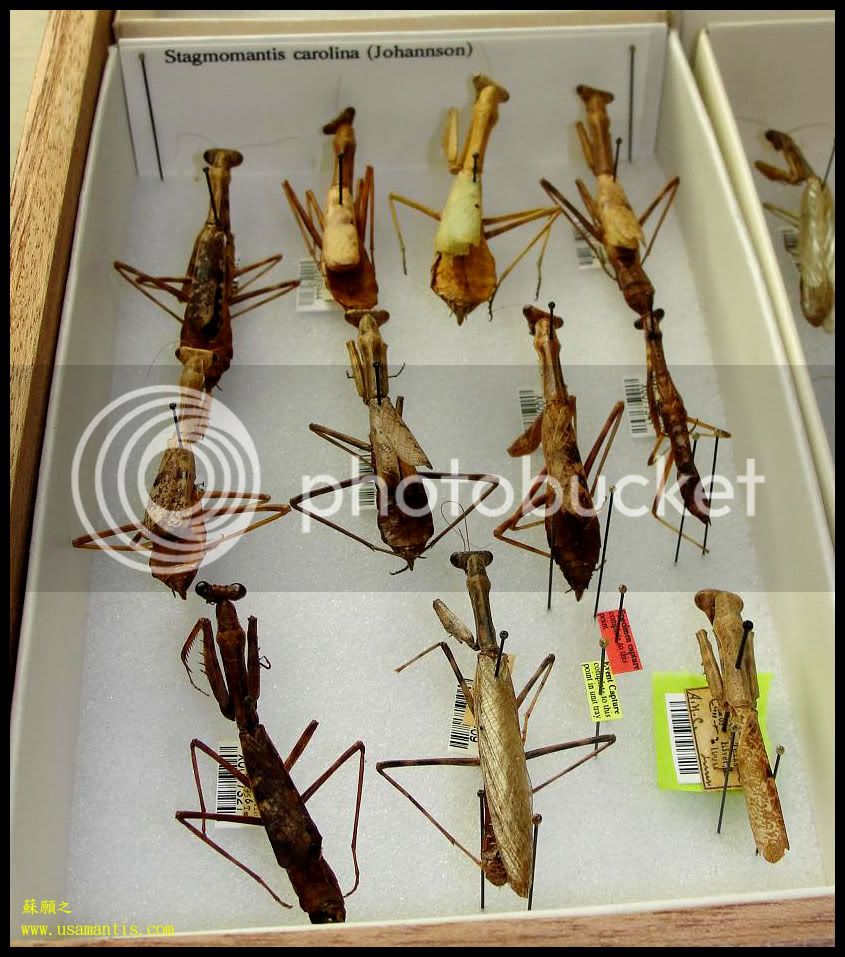
Florida bark mantis
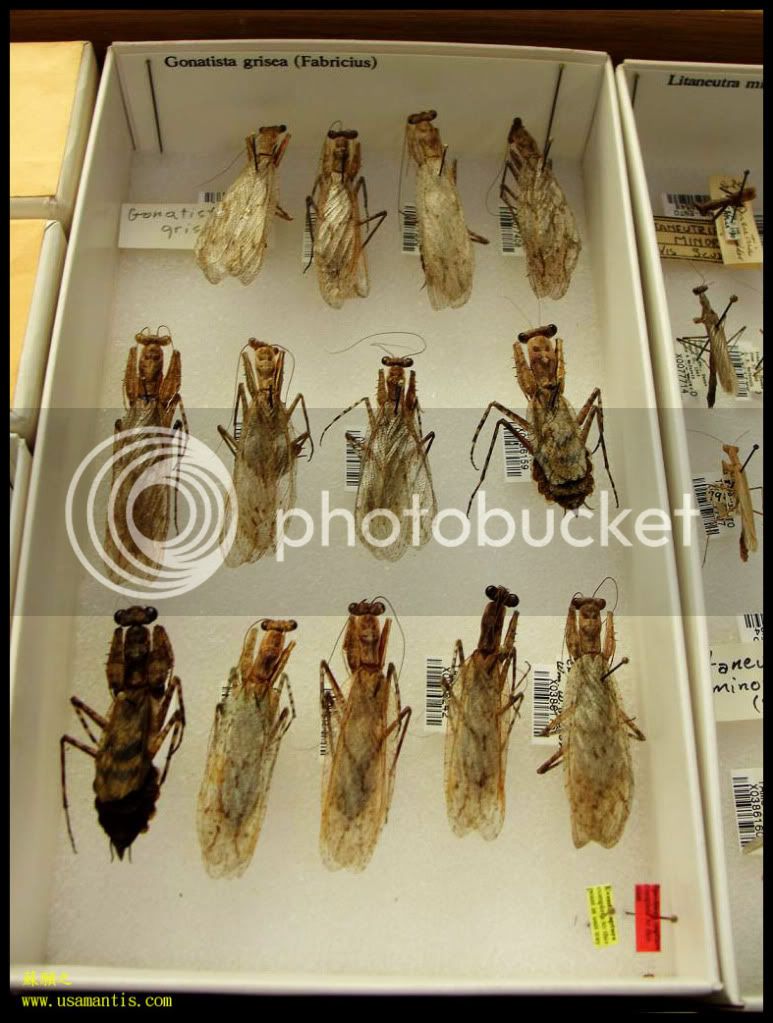
Brunneria borealis
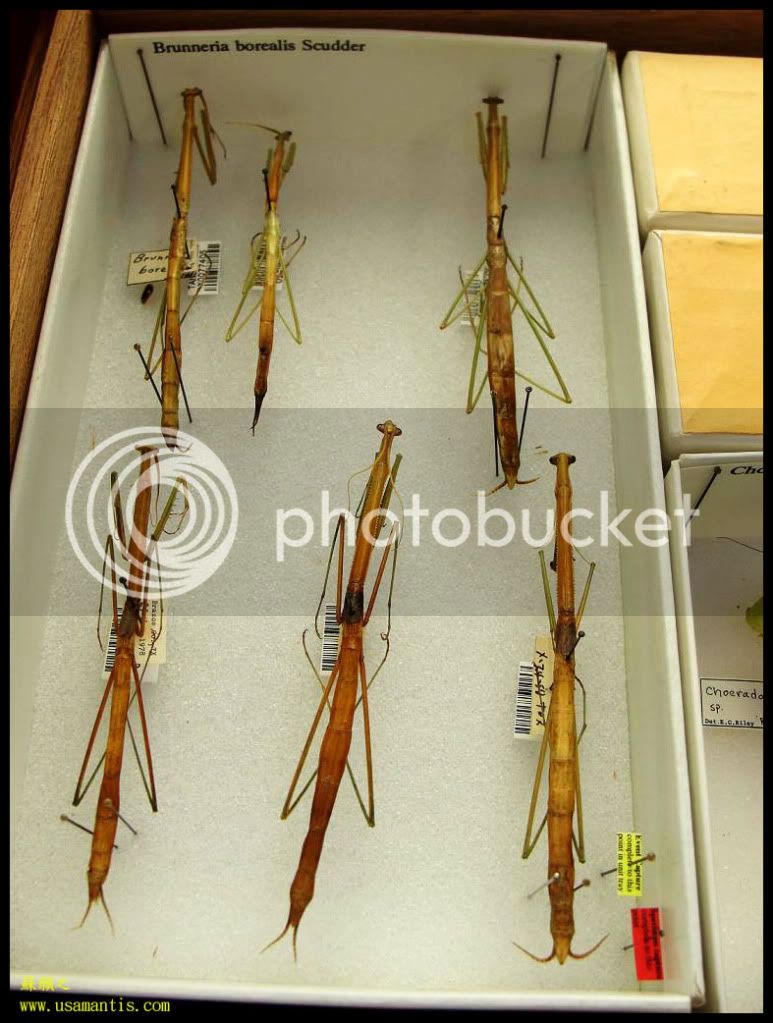
Oligonicella scudderi
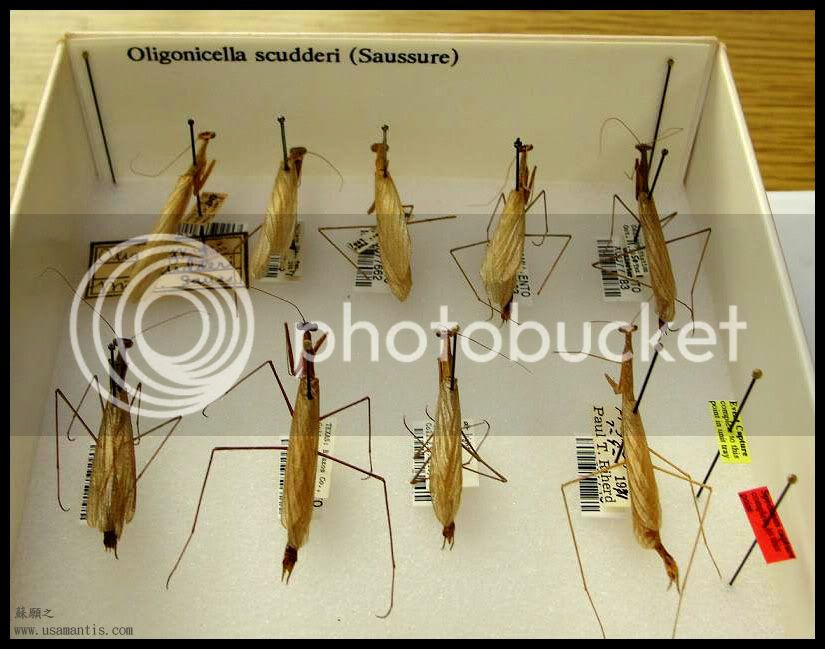
Oligonicella mexicana - check out the longer pronotum (longer metazona) compare to O. scudderi
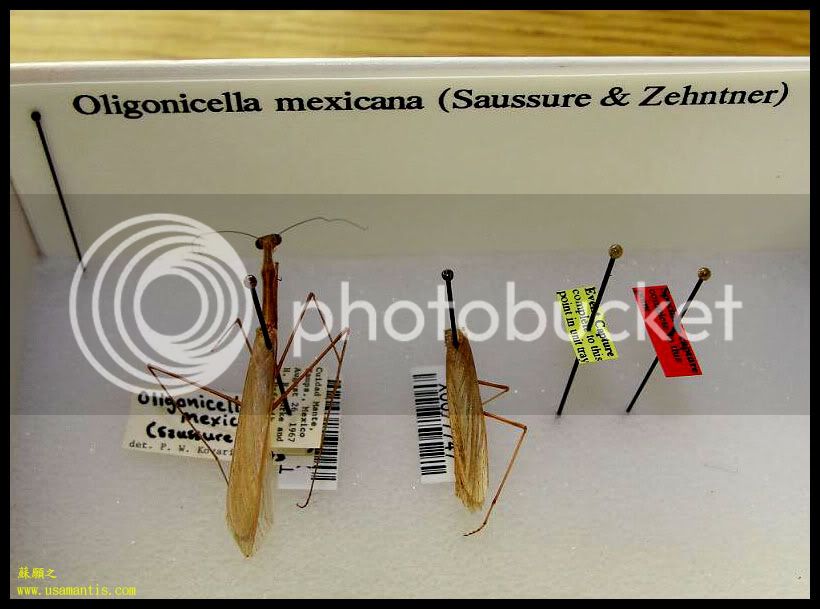
Other specimen besides mantis

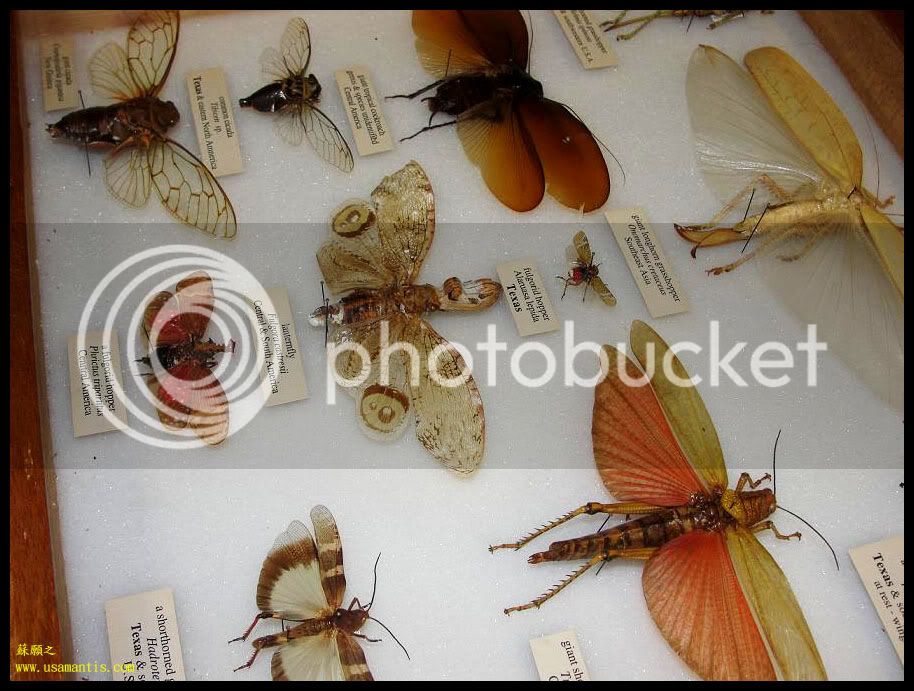
It is a tradition to have a group photo before lunch, this year is the same. I have gained lot of weight recently but some should still be able to spot me

yep!Very cool Yen.Second on the left?
Thanks Amanda for showing up, I hope you and your friends have fun there.I was also at the event! Thanks again Yen for giving me a heads up and inviting me to come!It was so amazing to get to go through and enjoy looking at TAMU's immense collection as well
as getting to meet people with such varied disciplines within entomology!
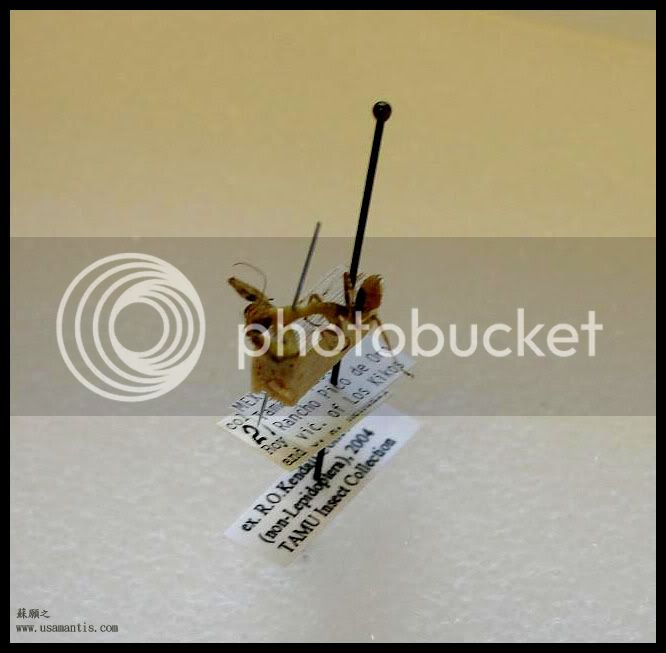
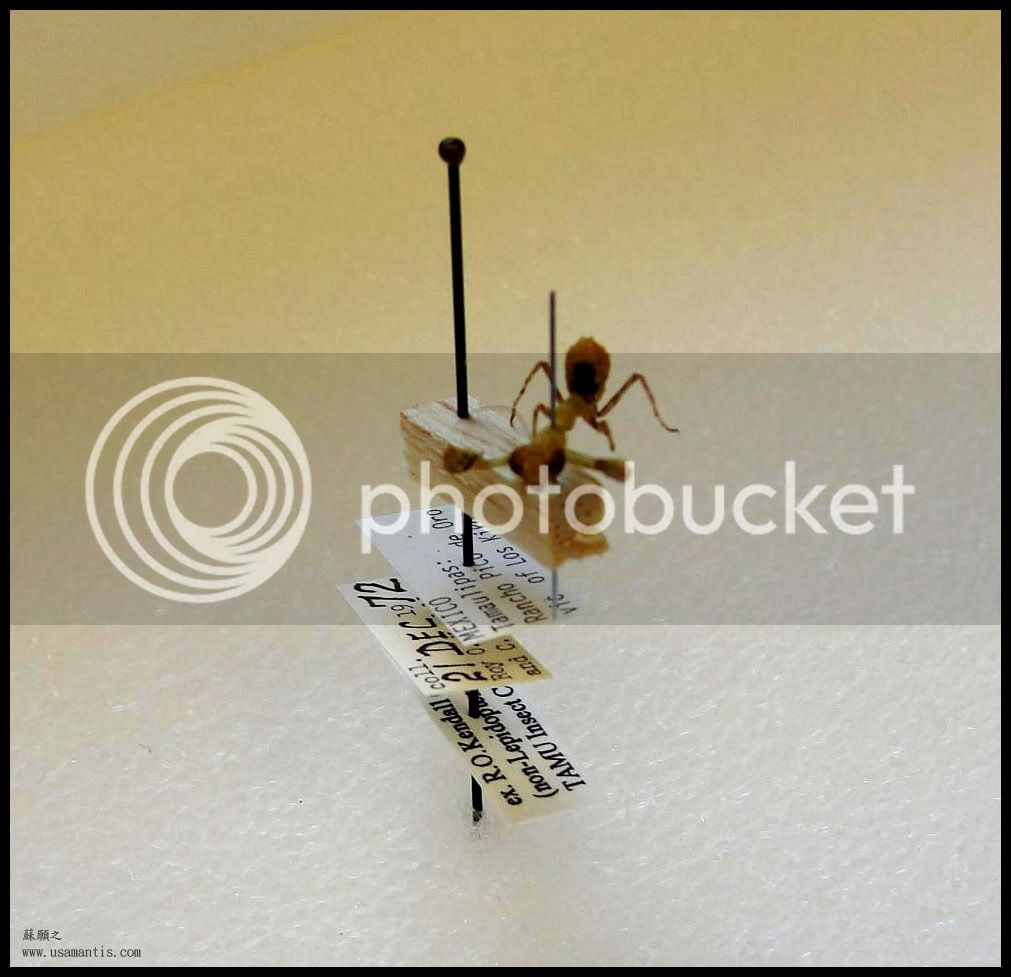
Eremiaphila sp from Amman, Jordan
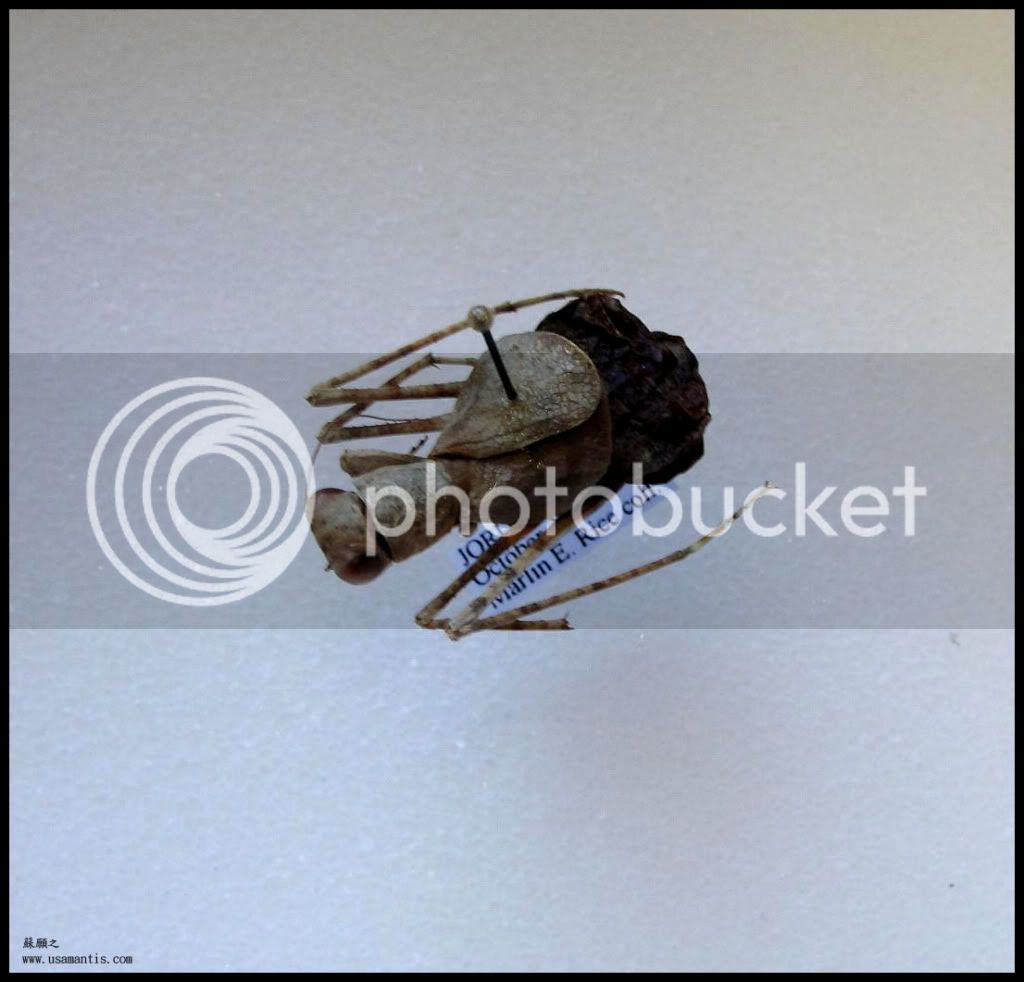
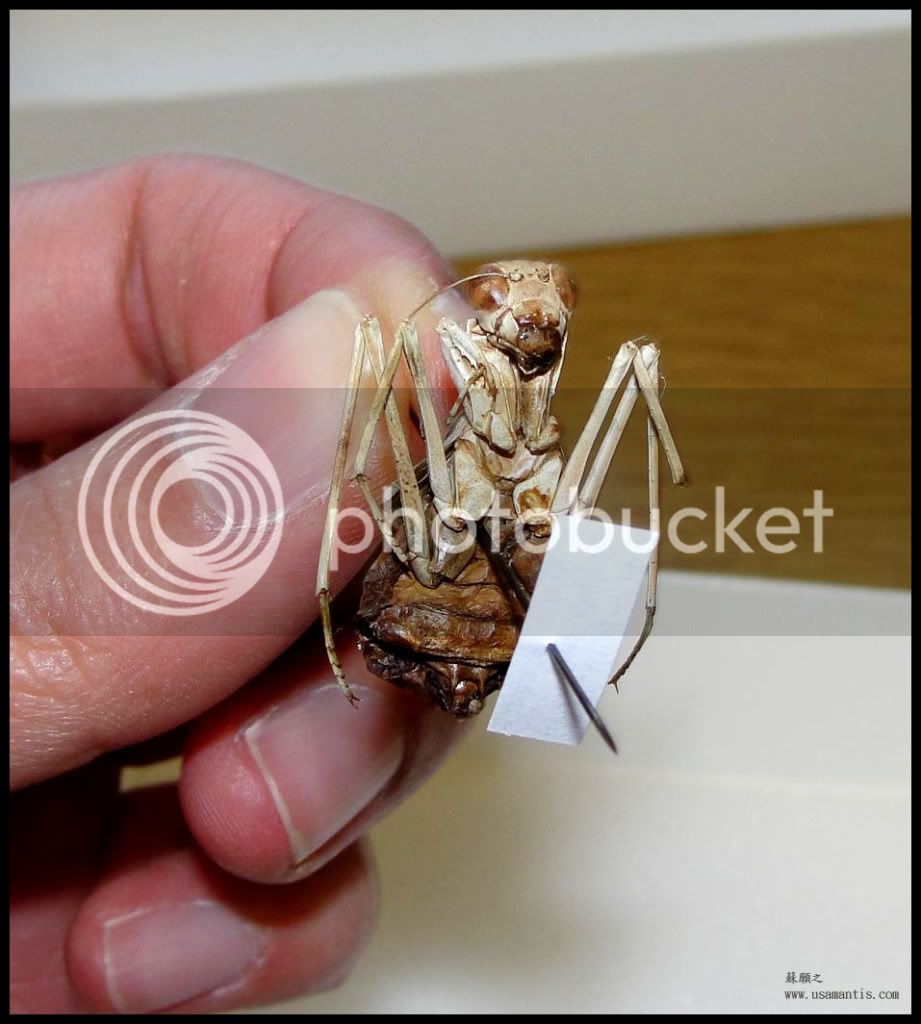
The specimen have been there for years actually. The wings on adult male Florida mantis are actually transparent with some gray marking. Following are some of the recently spread Gonatista grisea from my collectionwhy do the barks look as if they're wings are soft like they just finished spreading out and they need to dry? some have wings that looka little too clear for a mantis. also, how long would it take for a mantis to develop full wing color? I noticed it takes 3 days for Creobroter, 1 day for miomantis, hierdula, tenodera, species like that. but what about the barkies?
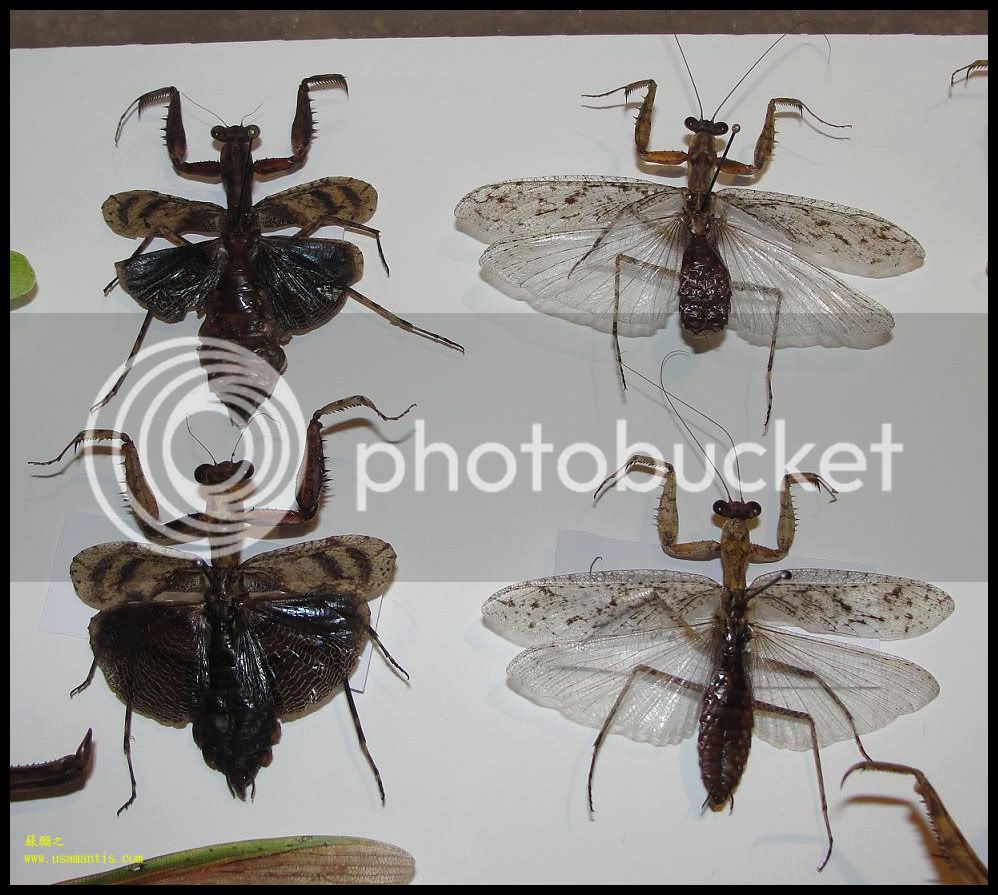
Florida bark mantis gets the full wing color few hours after molting.
There are a few other new mantis specimen I haven't seen on previous two visits. A specimen from Iraq, looks like an Empusa sp.
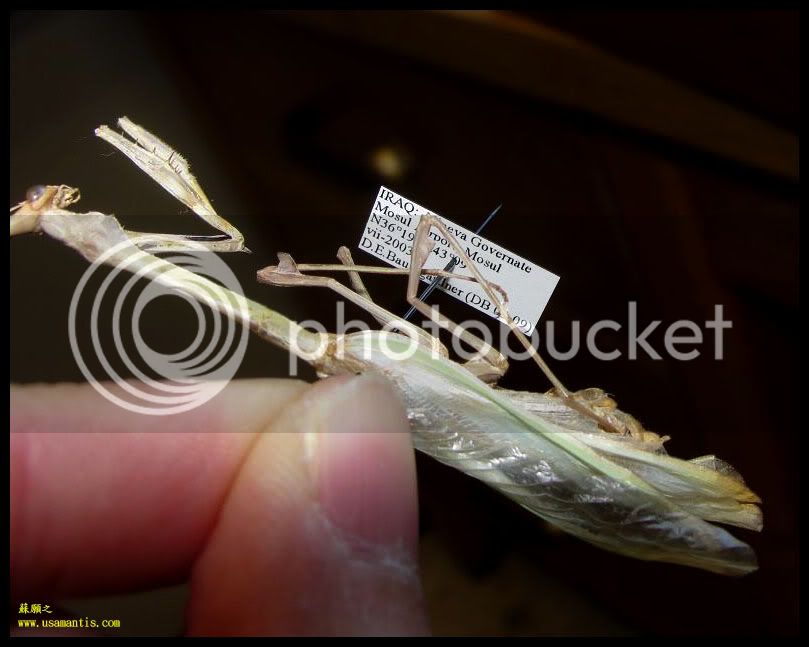
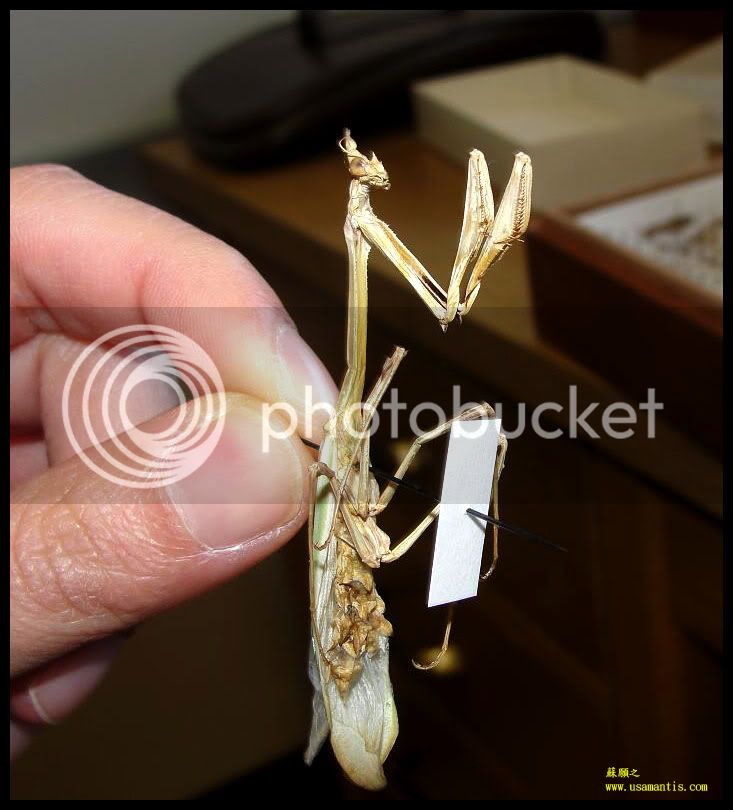
Female Choerododis sp. (probably rhombicollis)
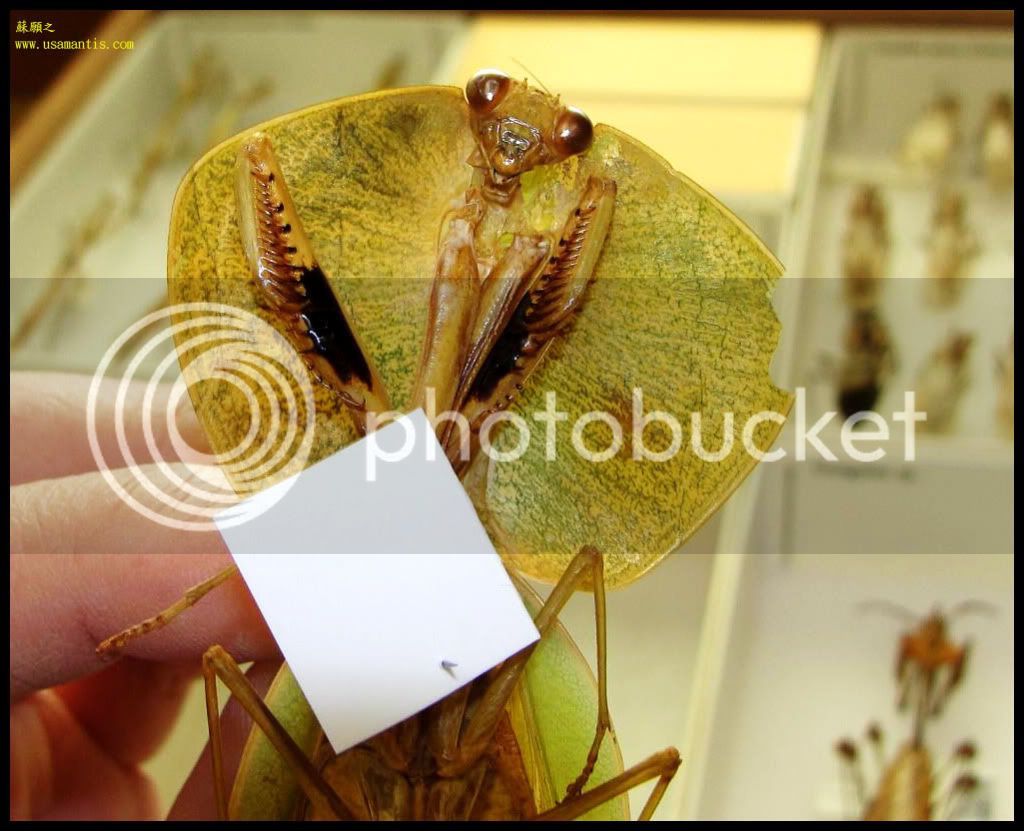
Male Choerododis sp.
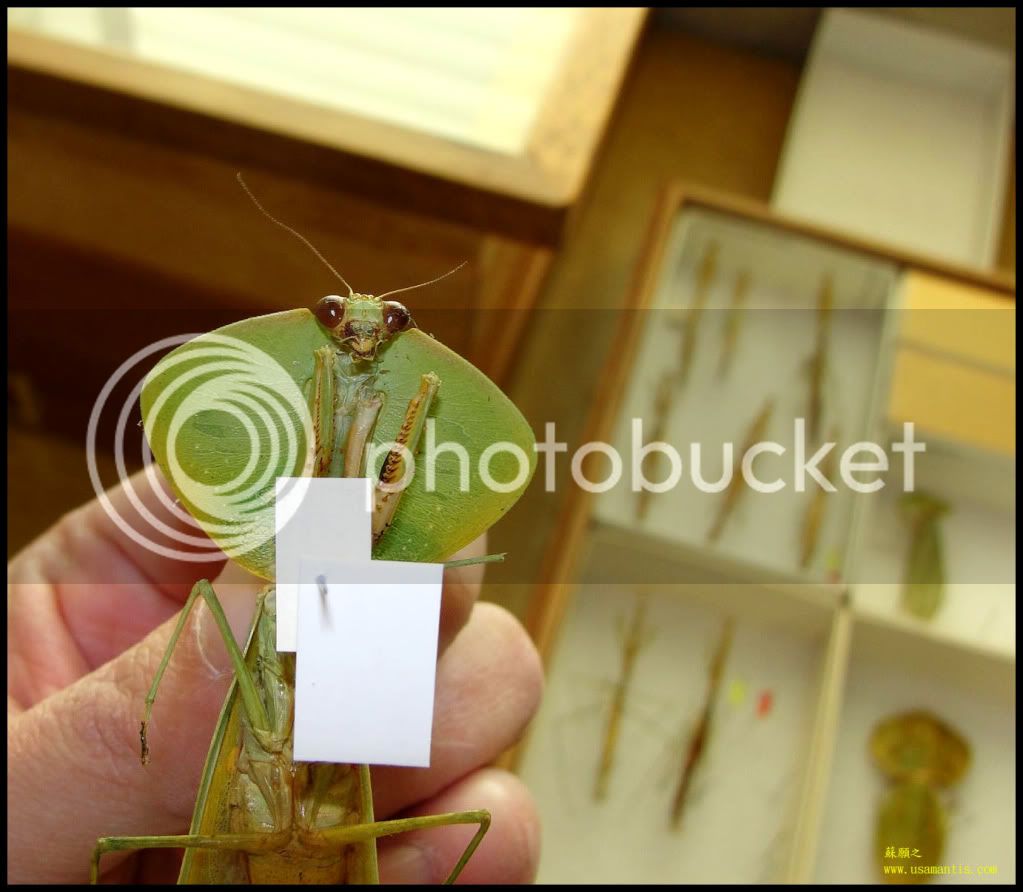
Charlie is another bug hunting buddy I met last year, a very knowledgable, humble, and kind chap.

ZoeRipper
Well-known member
Jeez, Yen! That's one helluva sheild on that female Choerododis!
ABbuggin
Well-known member
Looks awesome Yen. Sure wish I could of gone.
yeah she's a beauty and have seen better day I am sure.Queen antsJeez, Yen! That's one helluva sheild on that female Choerododis!
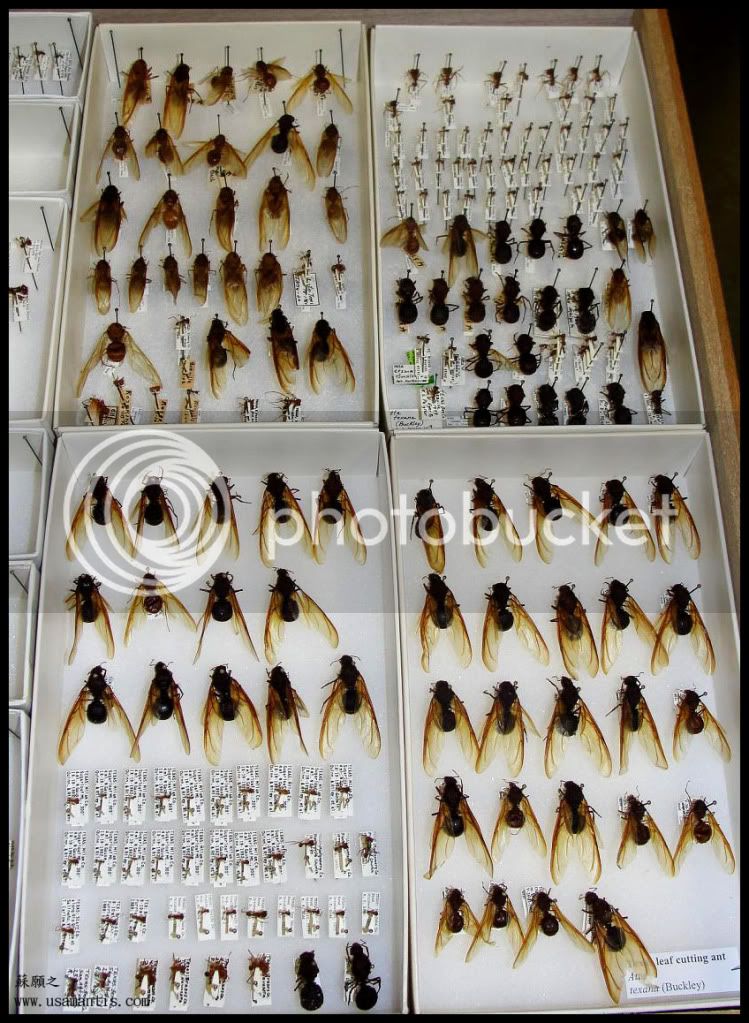
Looks like some popular jack jumper ant from Australia
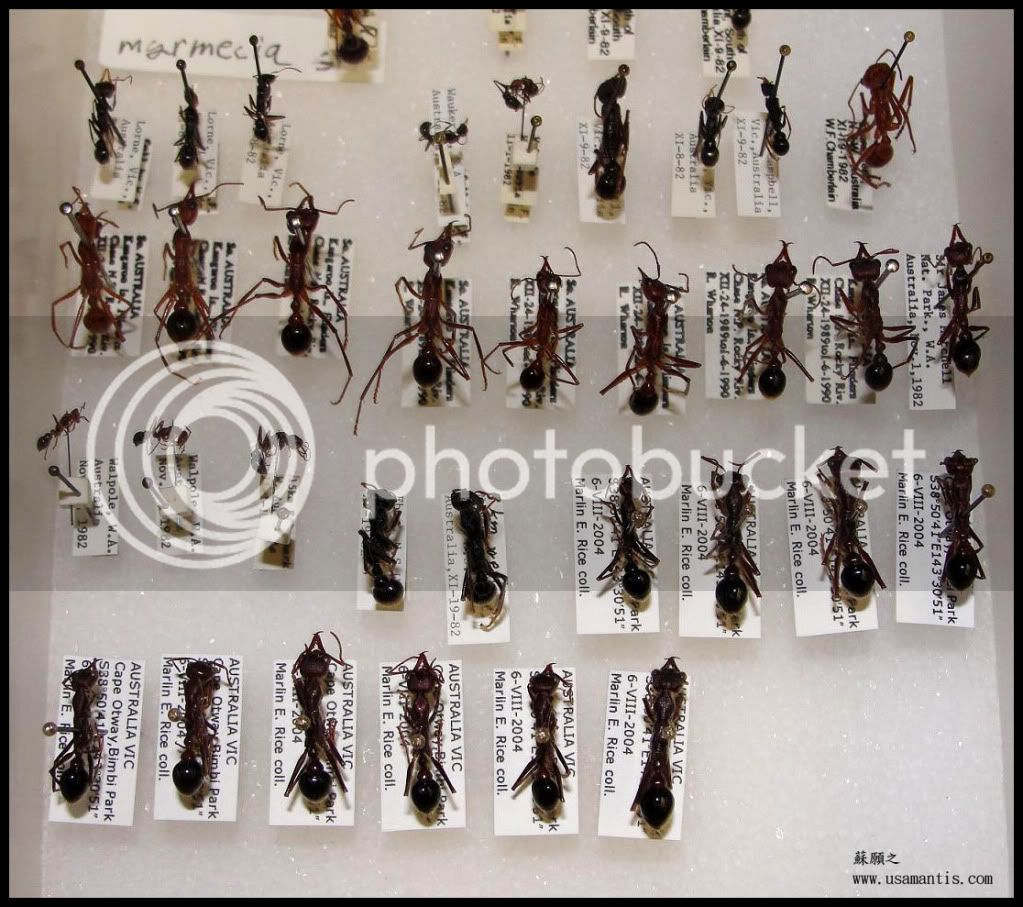
Some exotic beetles from Africa
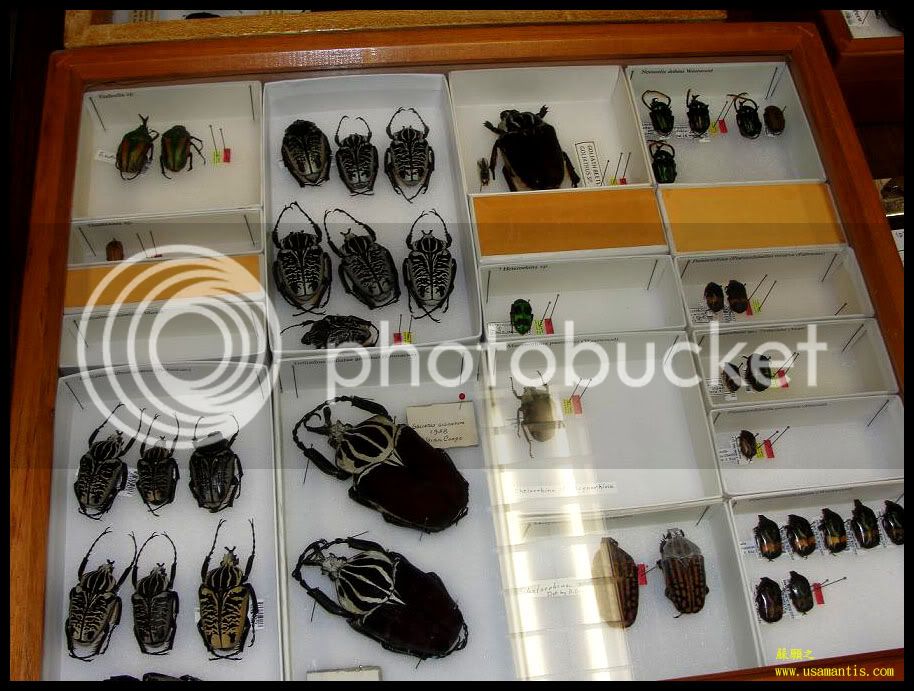
native mantis with ooth

more beetles
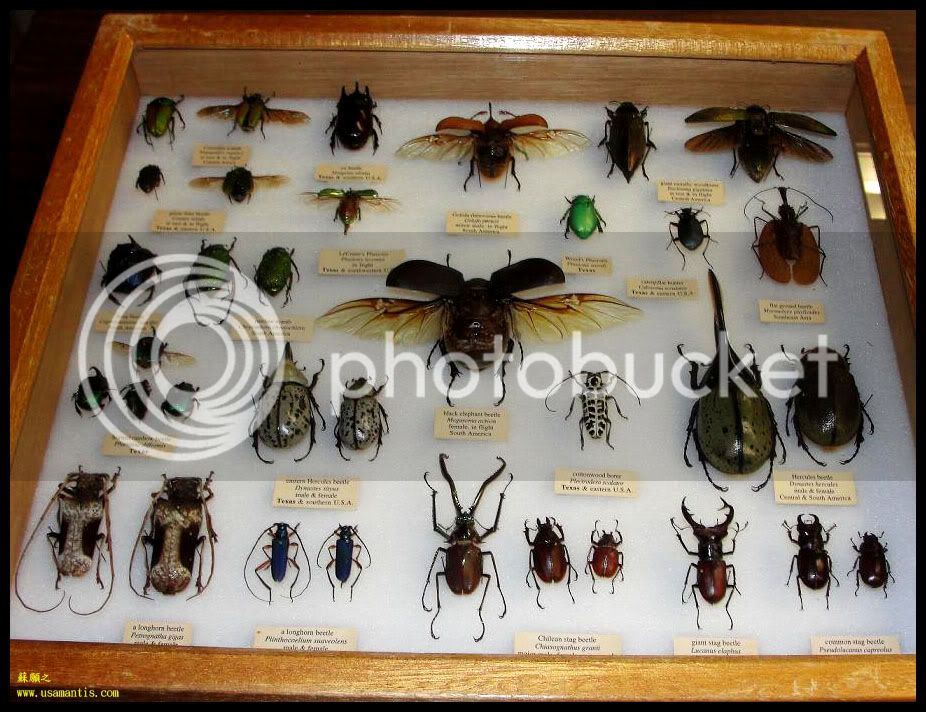
Assorted insects tray

Moth

Cannibalistic katydid - was told this would rip a praying mantis apart in minutes (Rehnia spinosa = Neobarrettia spinosa ??)
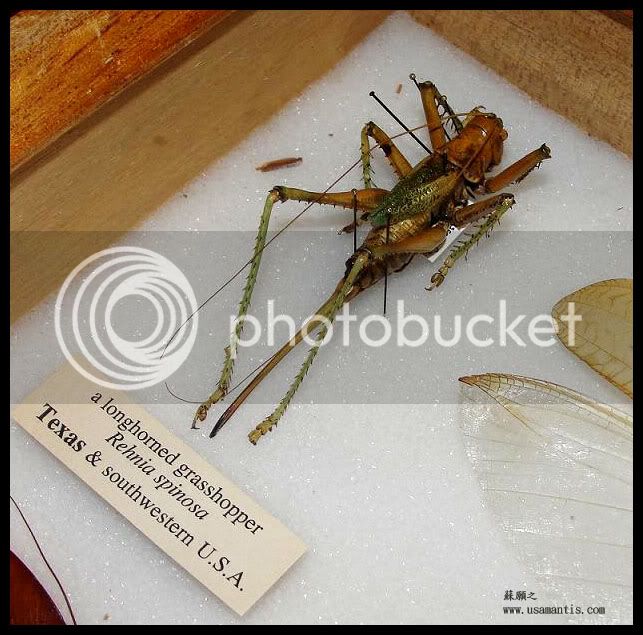
Hopper

Some of the visitors from Houston area (Amanda and Co.


$19.99 ($0.62 / Fl Oz)
byFormica Wingless Drosophila Melanogaster Fruit Fly Culture with ProGuard (Freshly Started, 32 oz. Cup (Excelsior))
byFormica Ant Products

$34.99
$39.99
RESTCLOUD 30" Large Monarch Butterfly Habitat Cage, Outdoor Insect Mesh Cage Terrarium 16.5" x 16.5" x 30"
Restcloud

$15.99
$19.99
RESTCLOUD Insect and Butterfly Habitat Cage Terrarium Pop-up 23.6 Inches Tall
Restcloud

$18.50
Praying Mantis Egg Case With Hatching Habitat Cup- 2 Praying Mantids Egg Cases
NaturesGoodGuys

$16.14 ($16.14 / Count)
$16.99 ($16.99 / Count)
crapelles Spider Mantis Bottle Breathable Outdoor Natural Animal Exploration Tools Science Research Butterfly Frog Insect Colored Cage Habitat Bug Catcher Critter Caterpillars Cricket Snail Container
NANFANG YONGLIAN

$13.99 ($13.99 / Ounce)
Surmen Legacy Freshly Started Flightless Drosophila Hydei Fruit Fly Culture
Surmen Legacy

$3.99 ($53.20 / lb)
$6.09 ($81.20 / lb)
Fluker's Gourmet Canned Food for Reptiles, Fish, Birds and Small Animals, Grass Hoppers 1.2 oz
Amazon.com

$14.79 ($14.79 / Count)
Butterfly Breeding Net Folding Butterfly Habitat Cage White Butterfly Mesh Cage for Kid Garden Science Education Tool 40x40x60cm Butterfly Cage
Hubeichunliangnongyefazhanyouxiangongsi

$13.99 ($223.84 / lb)
Surmen Legacy Freshly Started Wingless Drosophila Melanogaster Fruit Fly Culture
Surmen Legacy

$12.99 ($0.03 / Count)
Predator Foods Bulk Live Mealworms - 500 Count (Medium - 0.5")
Predator Foods

$39.95 ($1.25 / Ounce)
Creation Cultivated 32oz Fruit Fly Culture - Live Feeder Insects for Praying Mantis, Jumping Spiders, Geckos, Lizards, Dart Frogs (Drosophila Hydei Flightless)
Creation Cultivated

$18.99 ($2.12 / Ounce)
Josh's Frogs Producing Wingless Drosophila Melanogaster Fruit Fly Culture
Josh's Frogs

$13.99 ($0.44 / Ounce)
Fresh Fruit Fly Culture (Drosophila Hydei) - Praying Mantis Mantid Frog Lizard Food - 32oz Cup
Surmen Legacy
Another friend from Houston area. Anita is a naturalist from Jesse Jones Park at North Houston where i am going to attend her park program helping out on mantis identification within the park. In return she will help me in translation of some German literature since she's a German!

David and Dan bringing out freshly preserved insects for A&M staff to identify before selling them to the public.
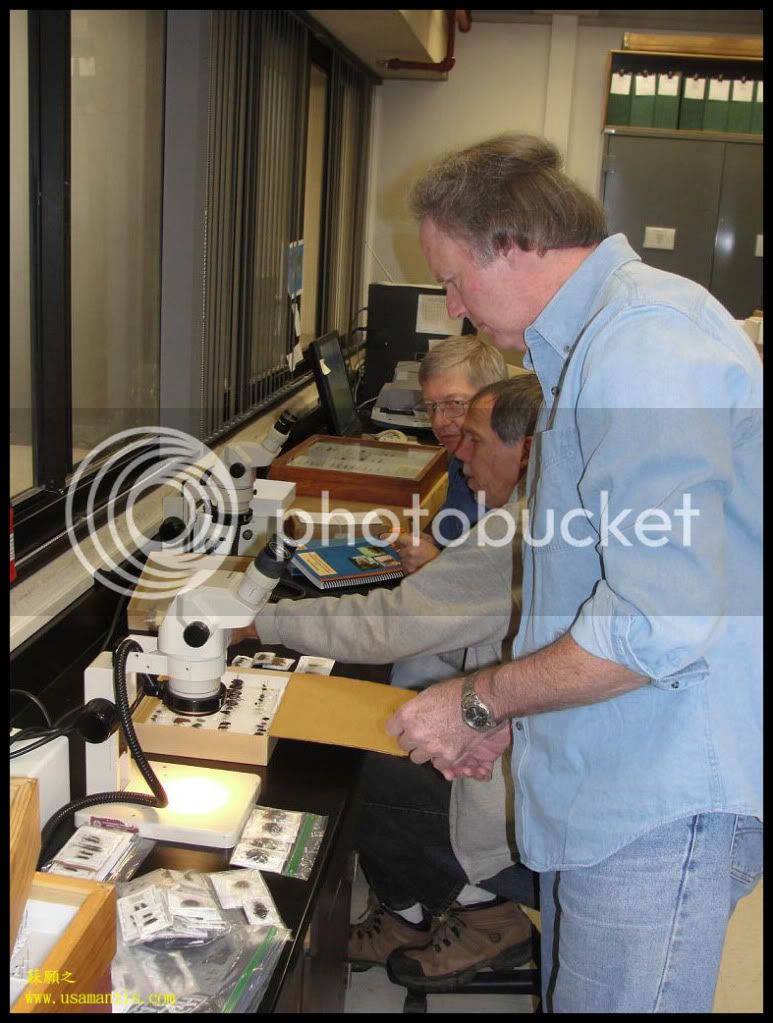
identification in progress.....
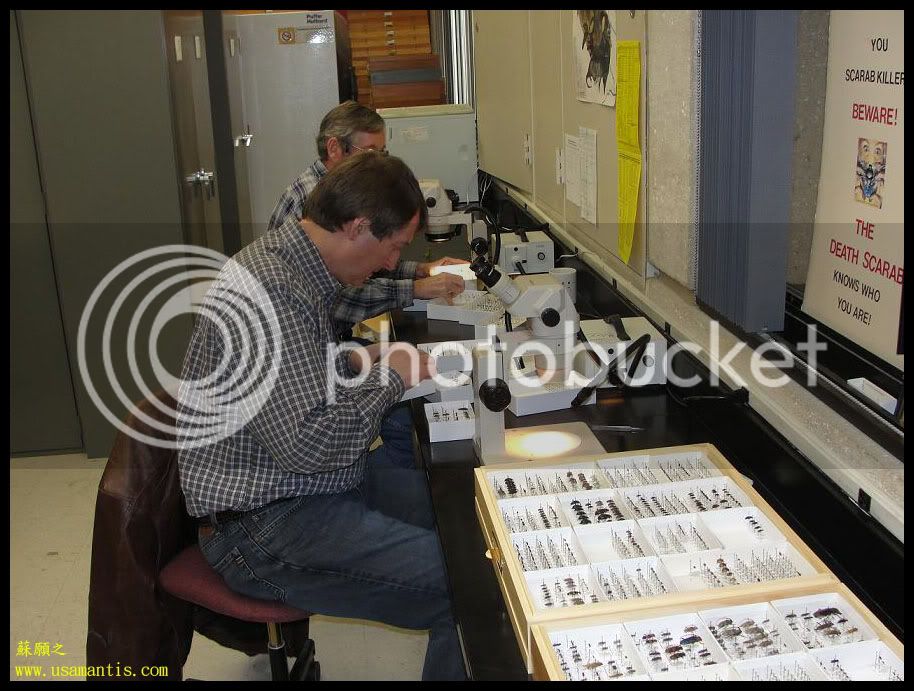
Stick insects
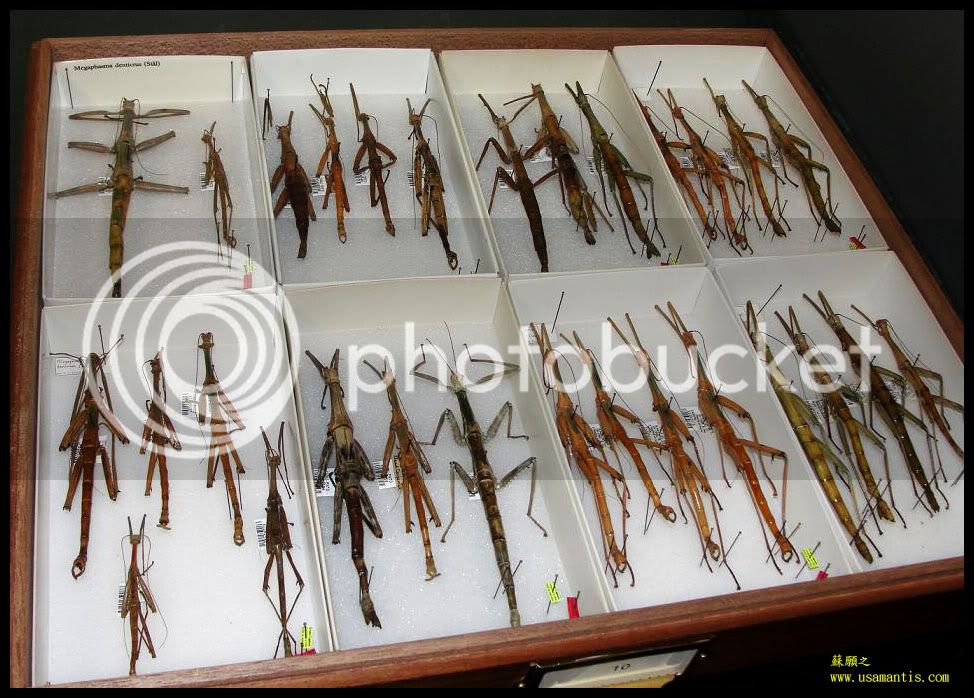
Roaches
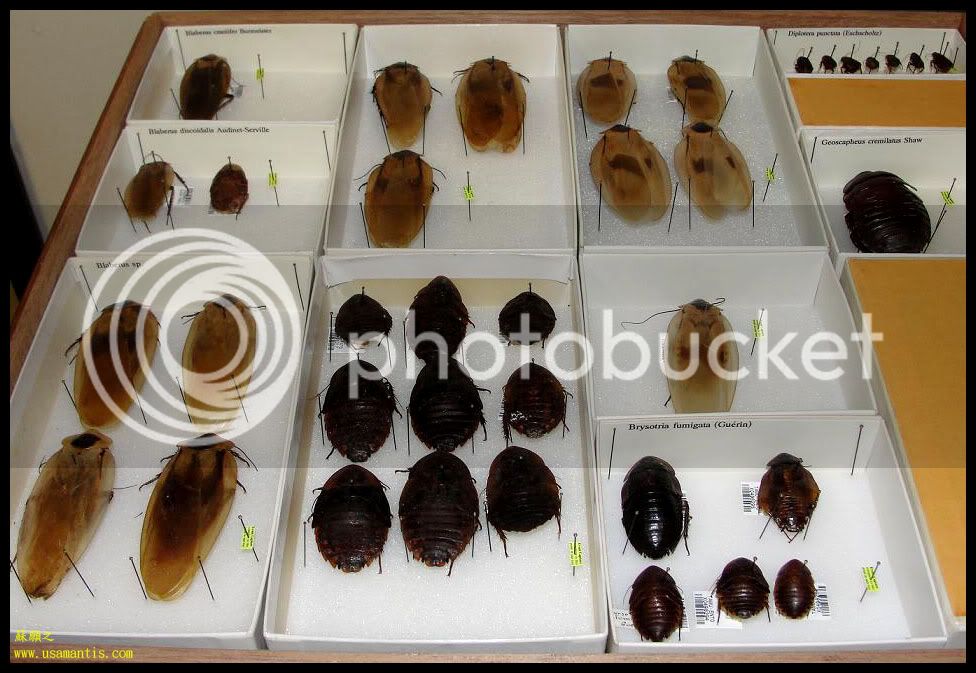
Wasps
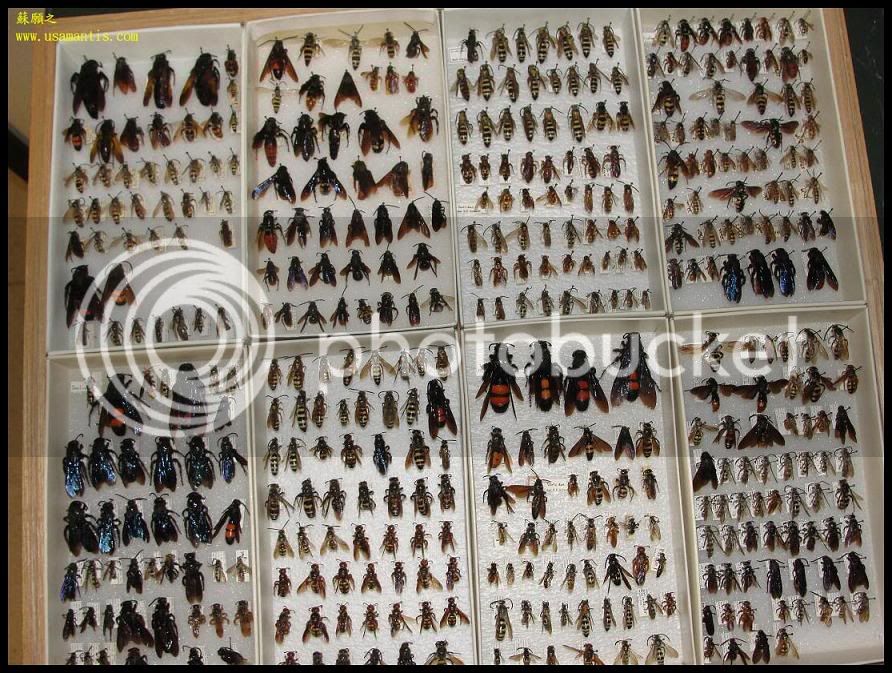
this look like a lot of work!

more mantis
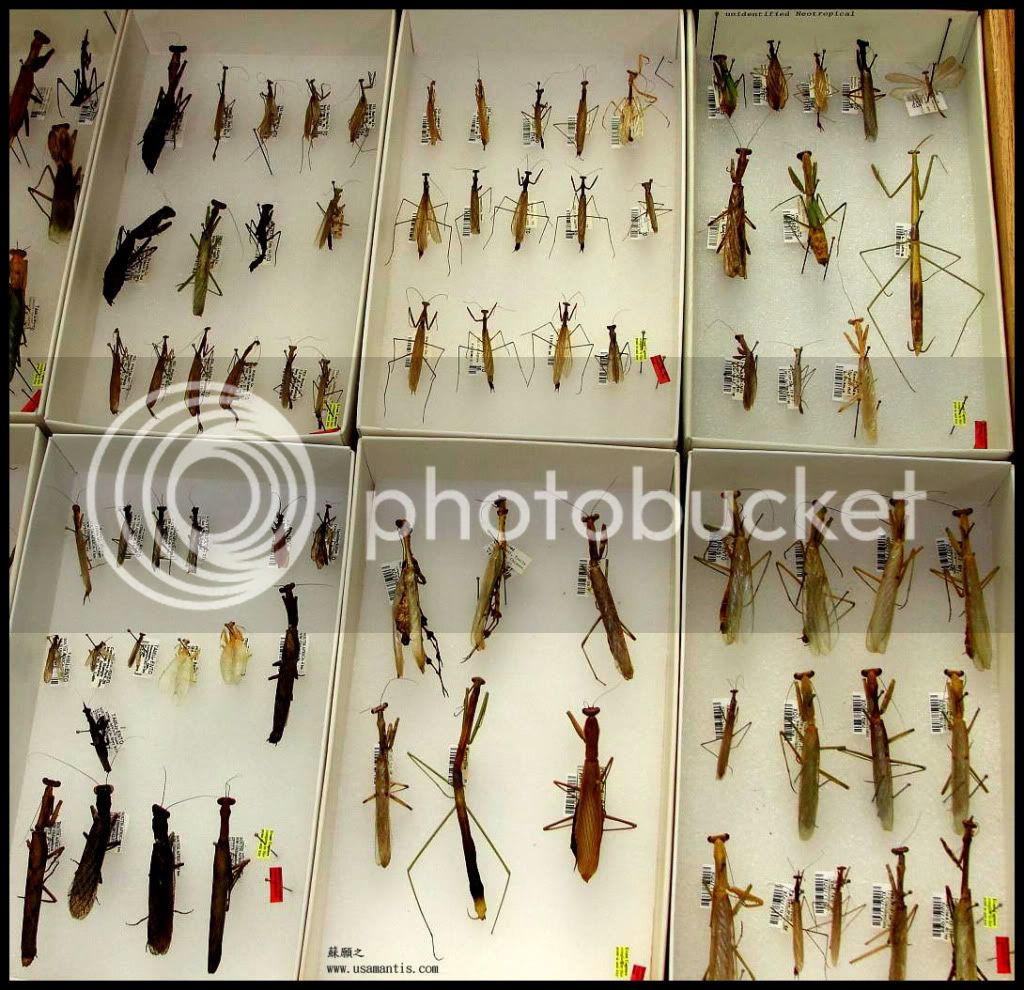
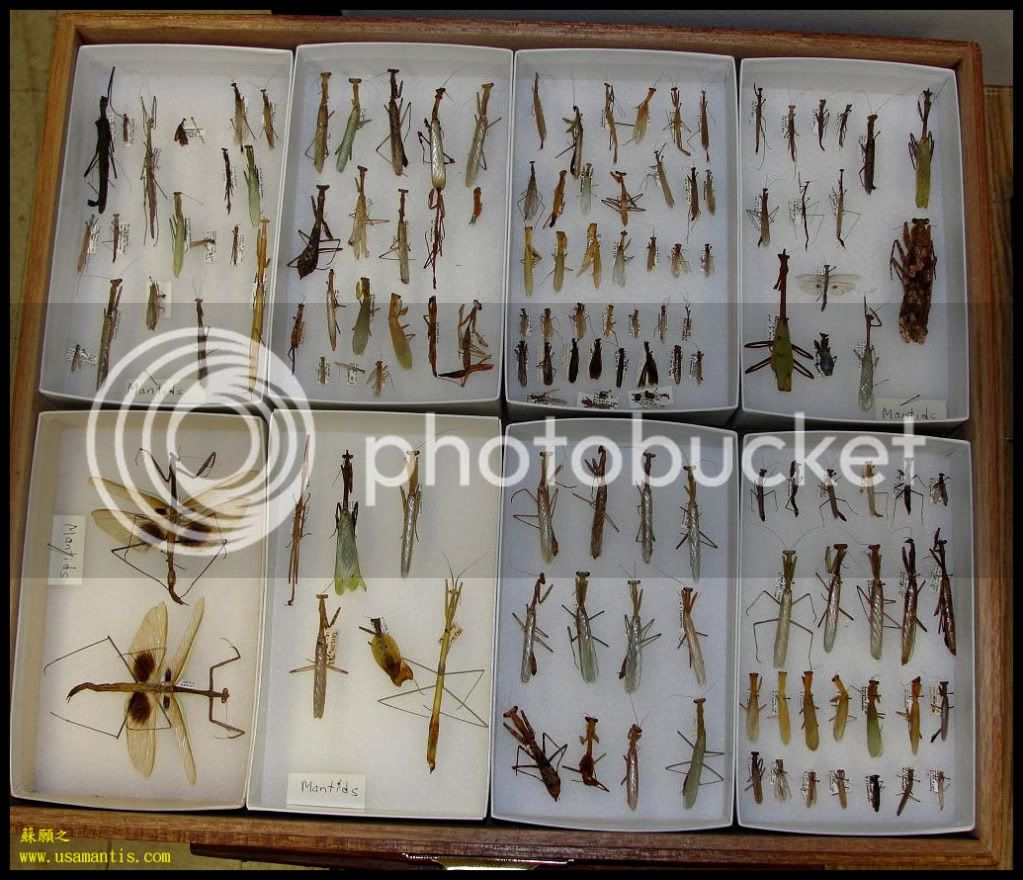
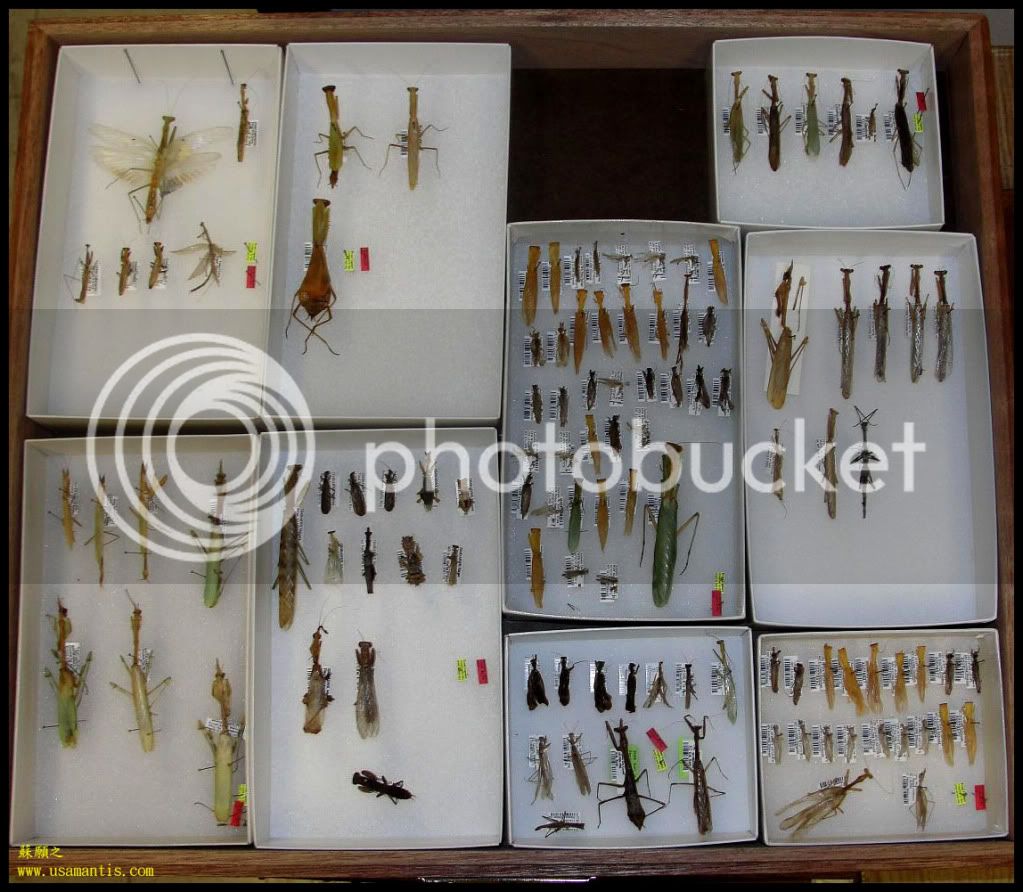

David and Dan bringing out freshly preserved insects for A&M staff to identify before selling them to the public.

identification in progress.....

Stick insects

Roaches

Wasps

this look like a lot of work!

more mantis



Nice photos of obviously interesting event.  Looks like plenty of "a lot of work!" :lol:
Looks like plenty of "a lot of work!" :lol:
MantidLord
Well-known member
Wow. Those are sooo awesome! Great pics yen. You're lucky.
Yeah got to love the job to do that kind of work.Nice photos of obviously interesting event.Looks like plenty of "a lot of work!" :lol:
Thanks. Yeah good thing TAMU is only 90 miles from Houston.Mantoida maya – adult male. Specimens from Key Largo, FL.Wow. Those are sooo awesome! Great pics yen. You're lucky.
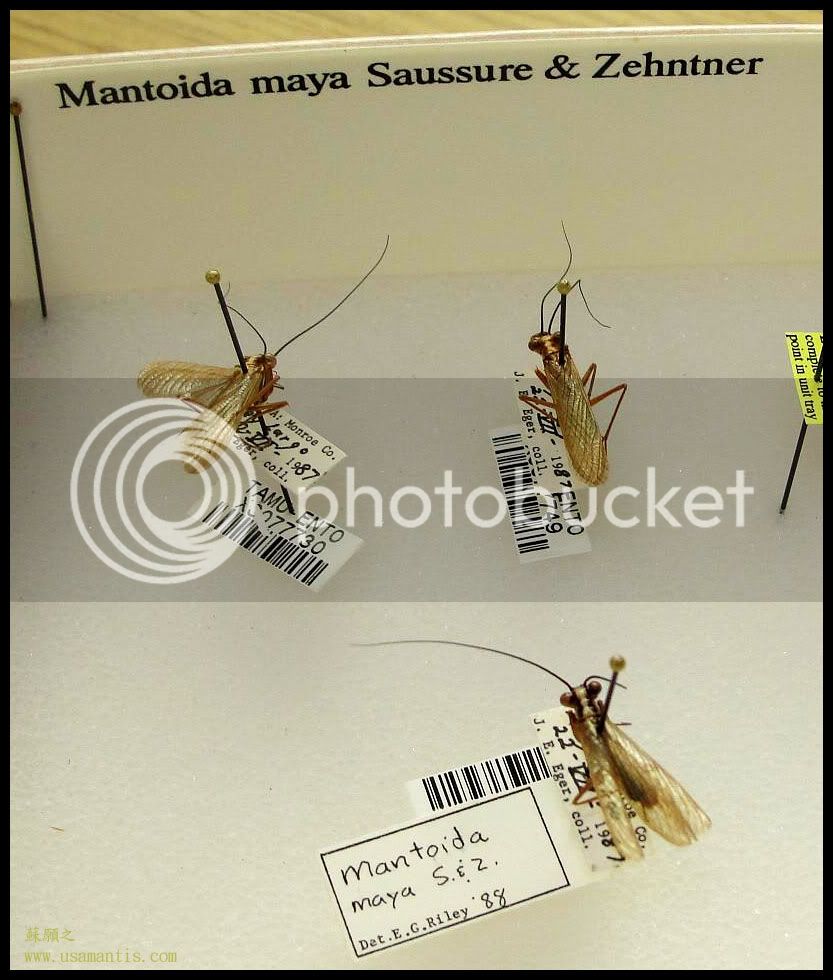
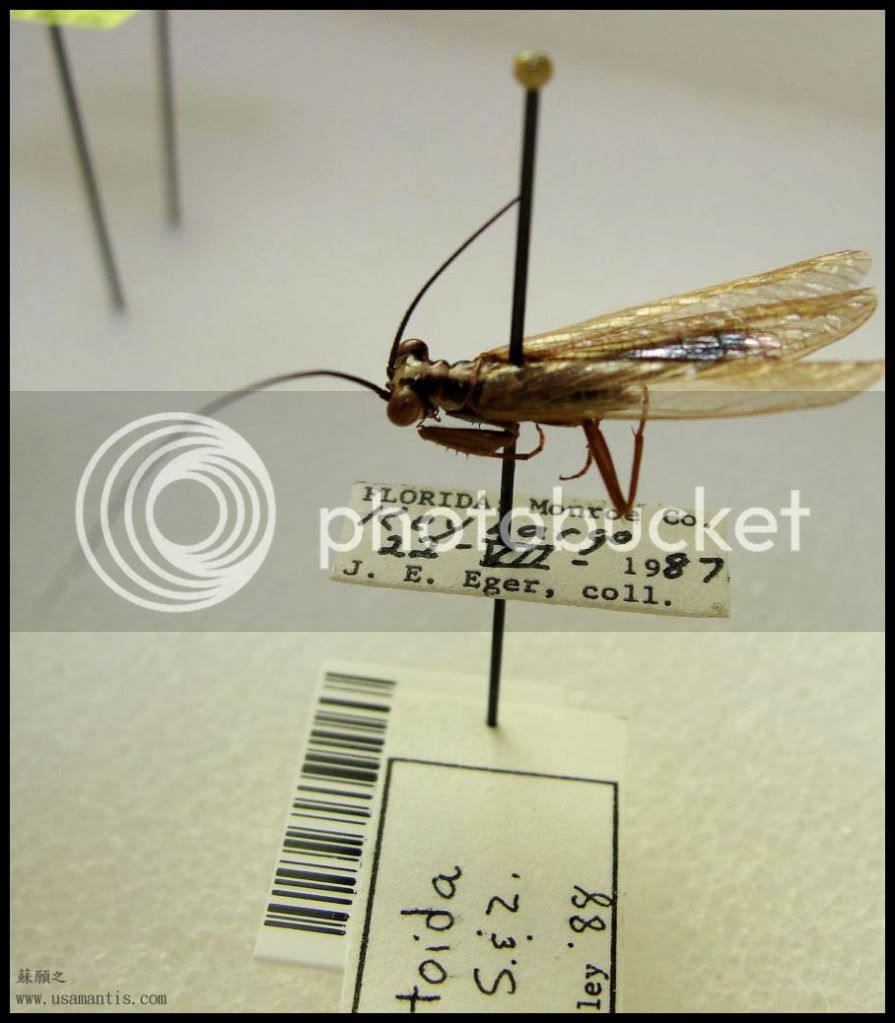
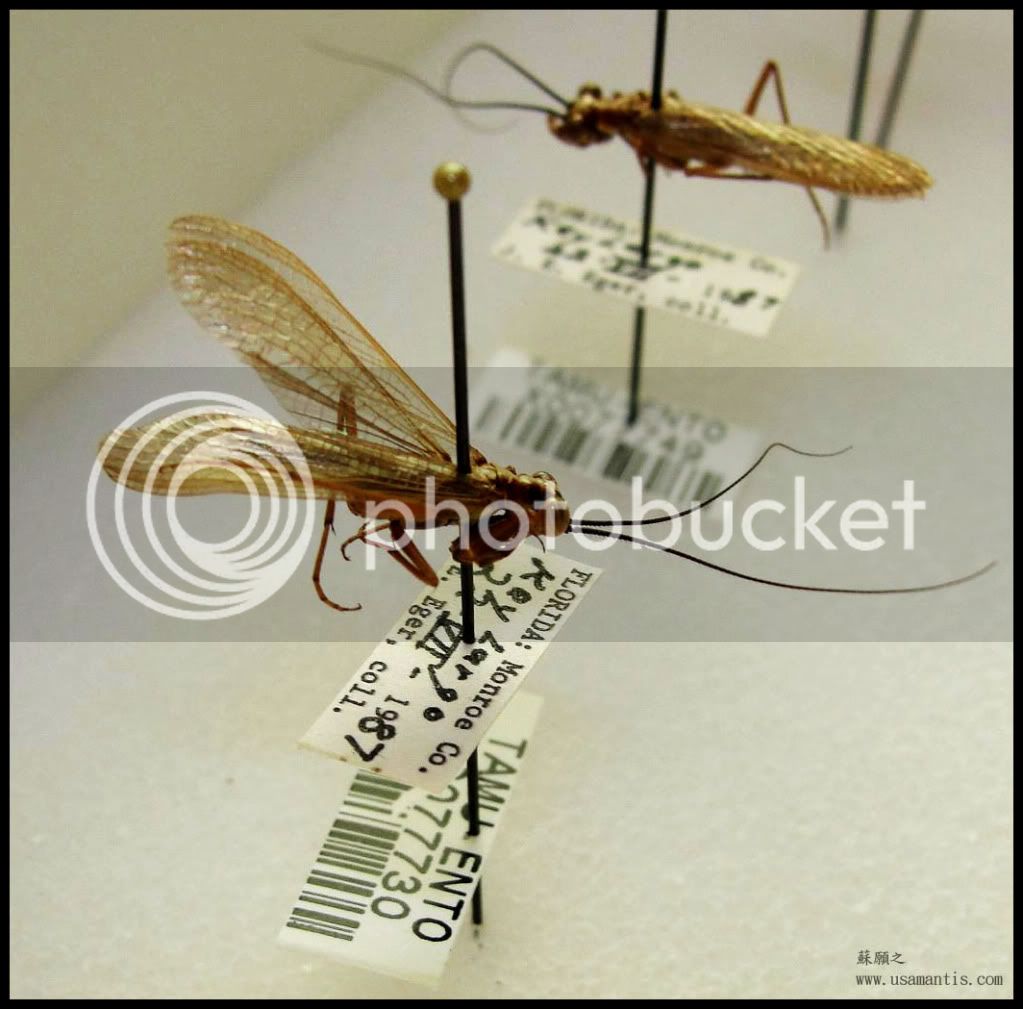
While taking down notes I saw a very small mantis, the smallest I have ever seen. Not even a cm. Appear to be from Australia.
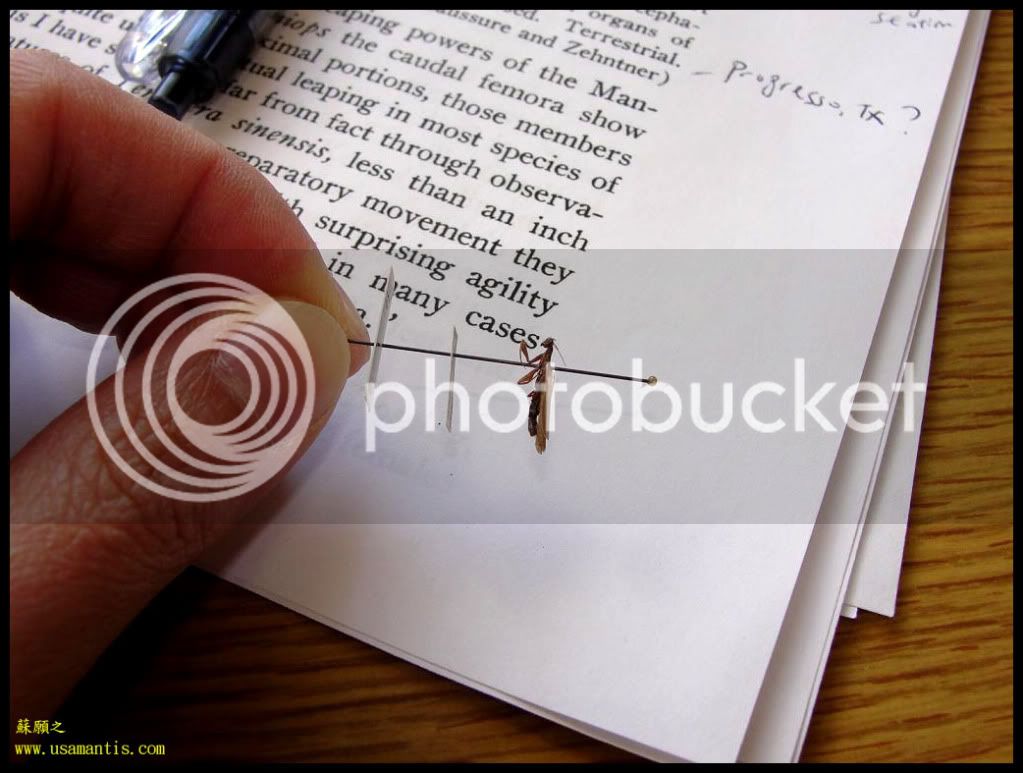
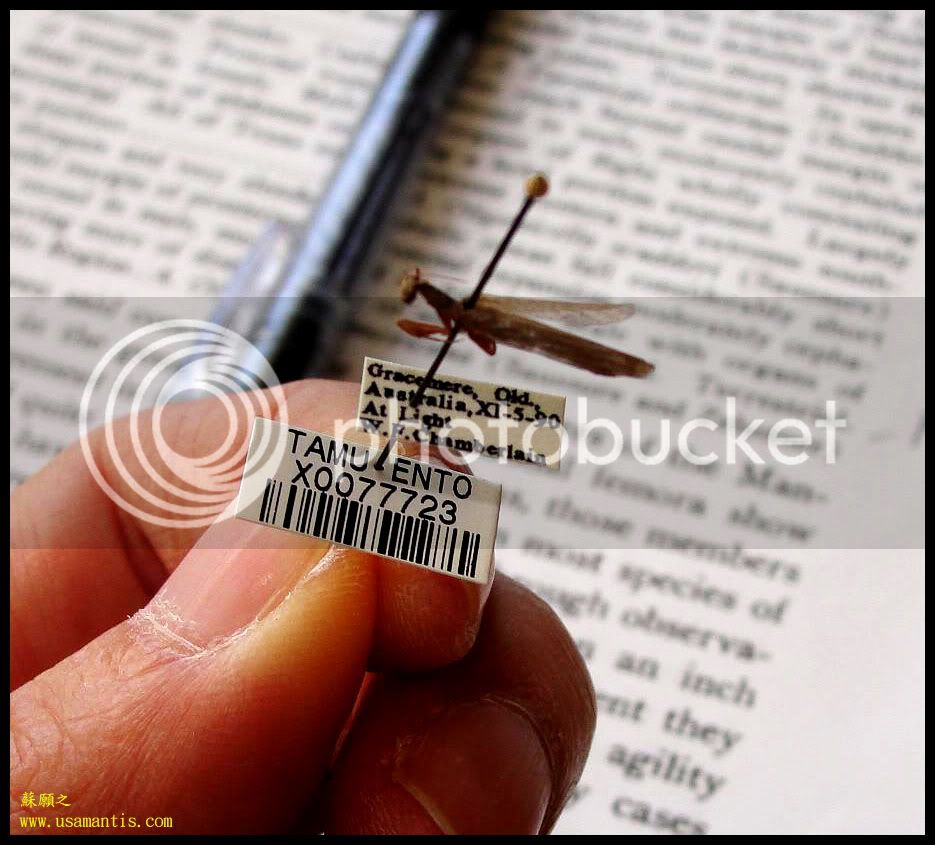
More hopper

Tiger beetles
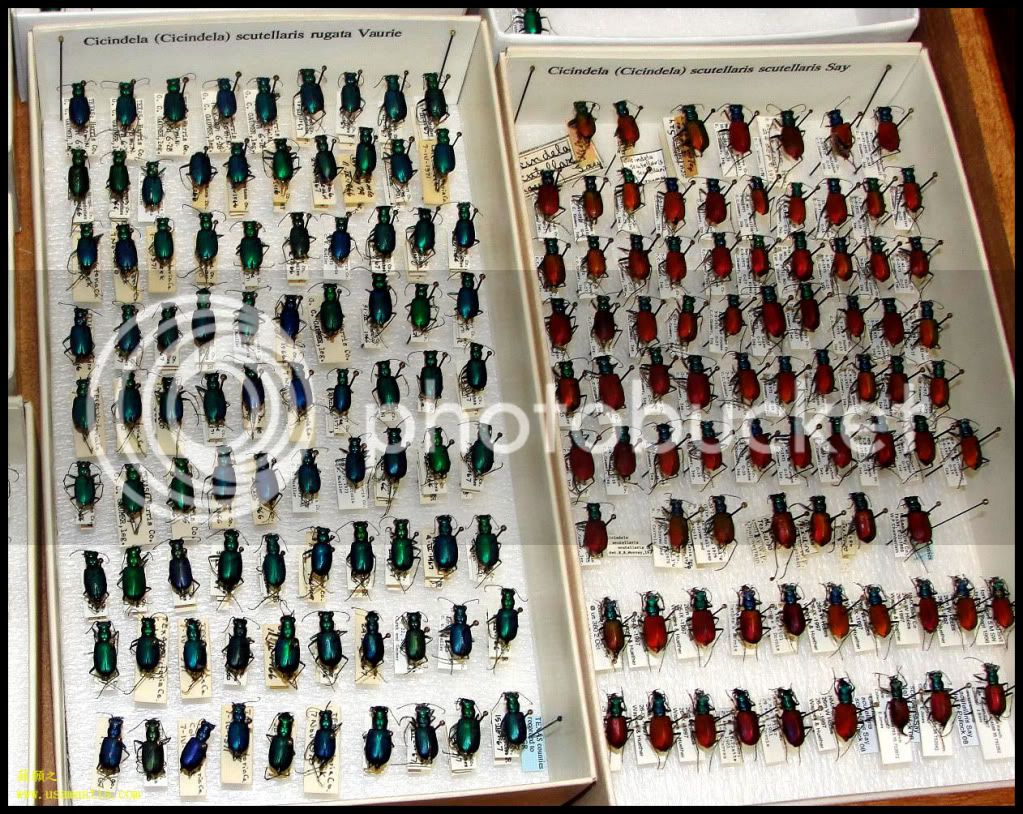
More mantis
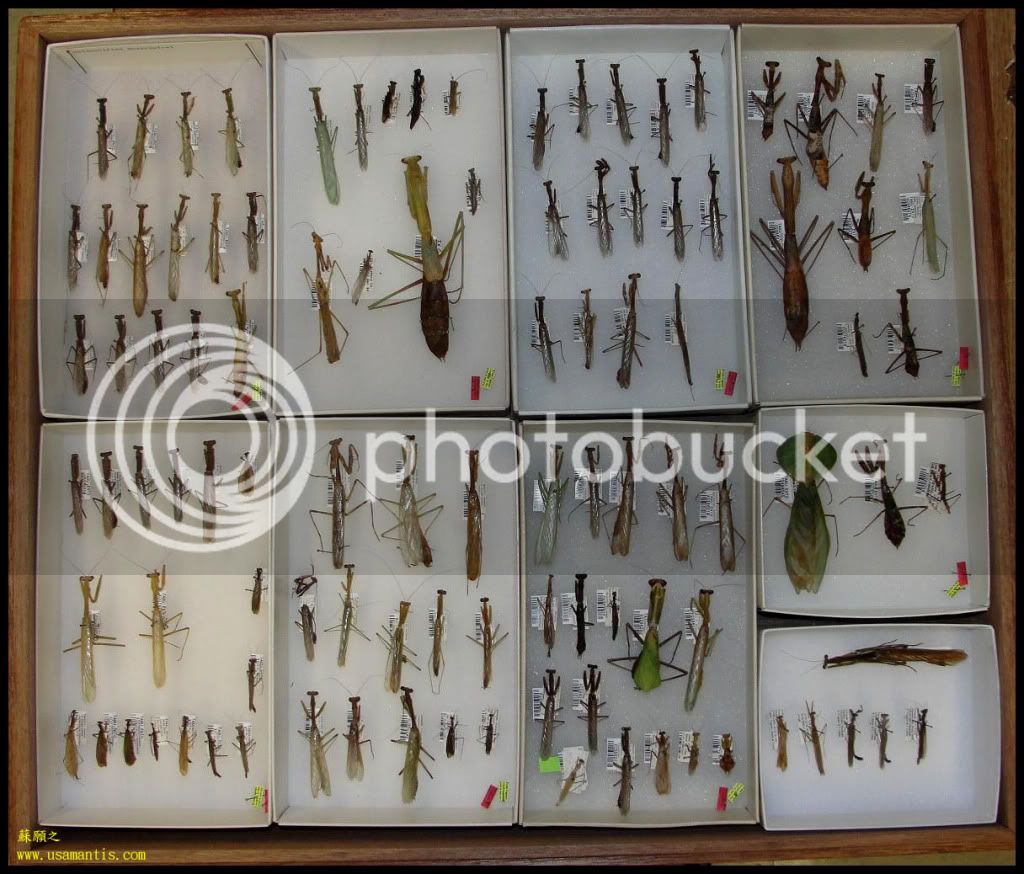
I missed this mantis – Zoolea sp
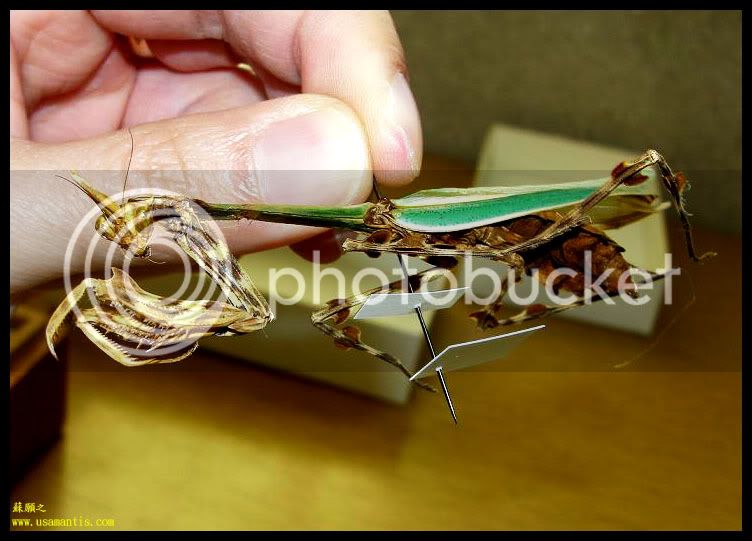
Some Pseudovates spp
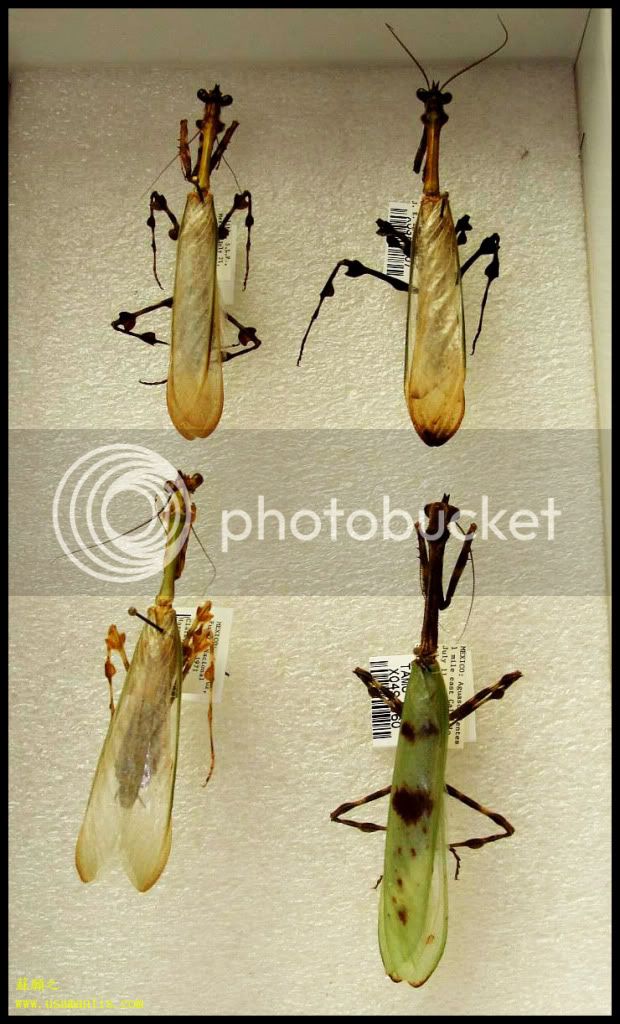
why does only 1 have wing color? When I preserved my dead Creobroter males, they both still have full color, they haven't faded. I have a special method of preserving them, I should probably mention it here.Some Pseudovates spp
PhilinYuma
Well-known member
I think that you are wise not to tell us before you have patented the process.why does only 1 have wing color? When I preserved my dead Creobroter males, they both still have full color, they haven't faded. I have a special method of preserving them, I should probably mention it here.
batsofchaos
Well-known member
Something that hasn't been mentioned yet in regards to preserving insects is that in addition to the feasibility of letting them die naturally is only part of it. In addition to actual physical study of a dead specimen, an important part of entomology involves the location and dates of collection. It's easy to understand why this info is important to researchers; it helps determine distinctions within a species by geographic location, and changes within a species in an specific geographic location over time. Perhaps the S. carolina in North Carolina tend to be slightly bigger/slightly greener/etc. than the ones that live in Colorado? Or if the ones in Colorado are bigger this year (a very wet year by Colorado standards) compared to 2004? I don't know if any of that's true, but what if it is? How would you be able to uncover information in that vein if all specimens, while originally wild-caught, were actually captive specimens, simply due to the fact that you kept them in a cup for six months with an artificial life cycle? Killing immediately upon collection, as well as accurate annotation, is essential for entomological research.
mantiseater
Well-known member
I think the ones with clear wing are vates they look similar to two males that i caught in JamaicaQUOTE (yen_saw @ Jan 14 2010, 01:36 PM) <{POST_SNAPBACK}>
Some Pseudovates spp
why does only 1 have wing color? When I preserved my dead Creobroter males, they both still have full color, they haven't faded. I have a special method of preserving them, I should probably mention it here.
































